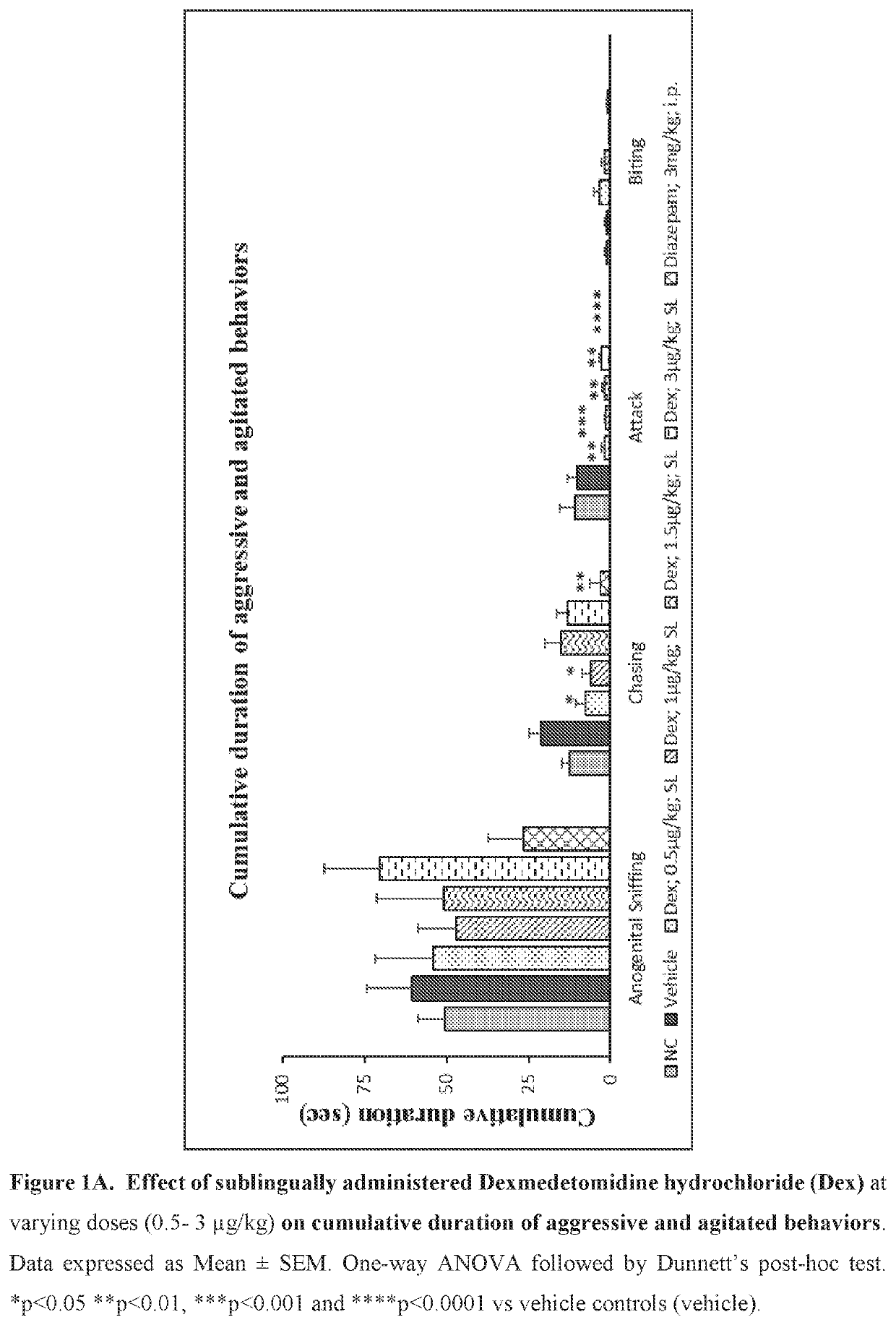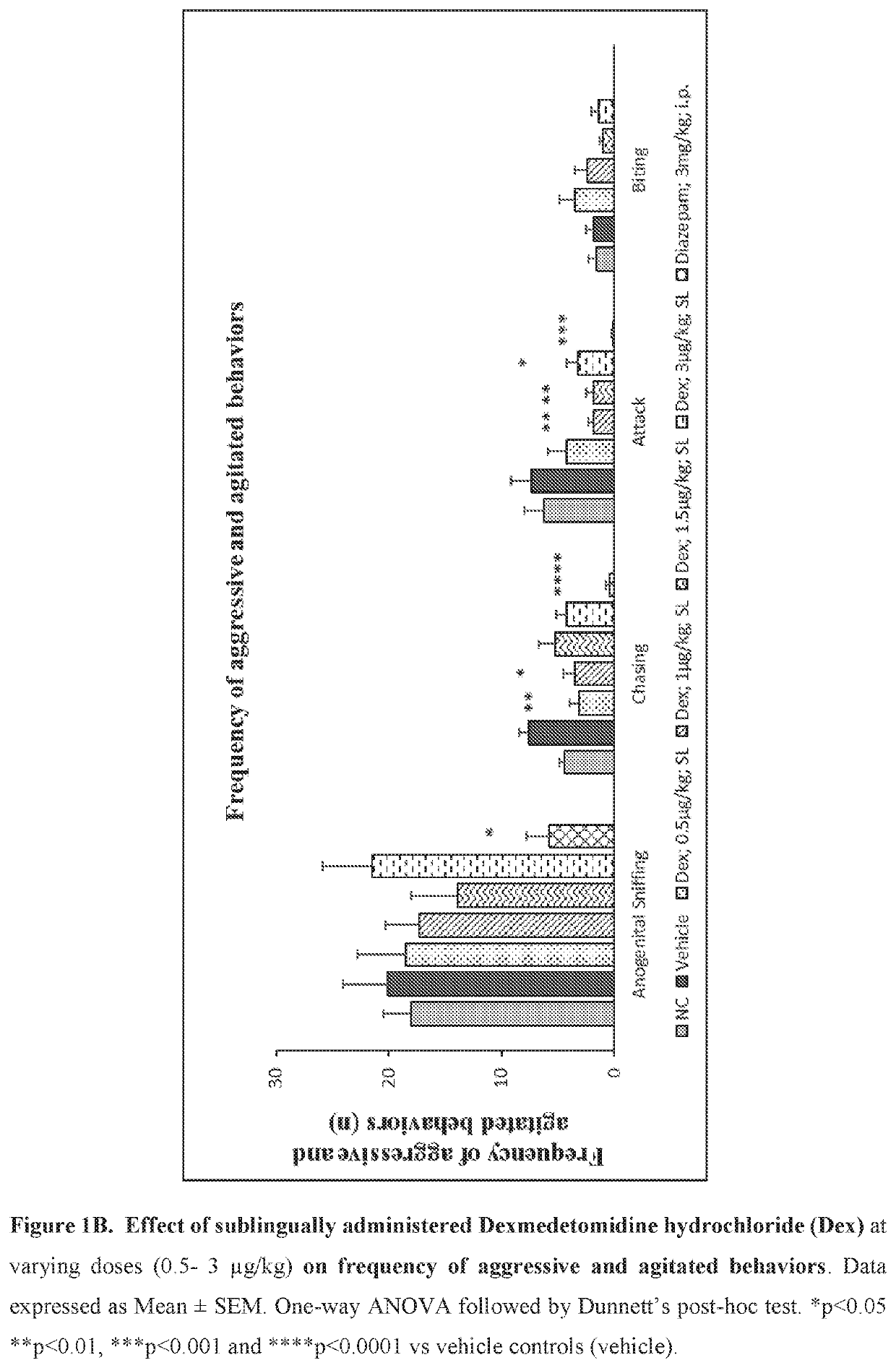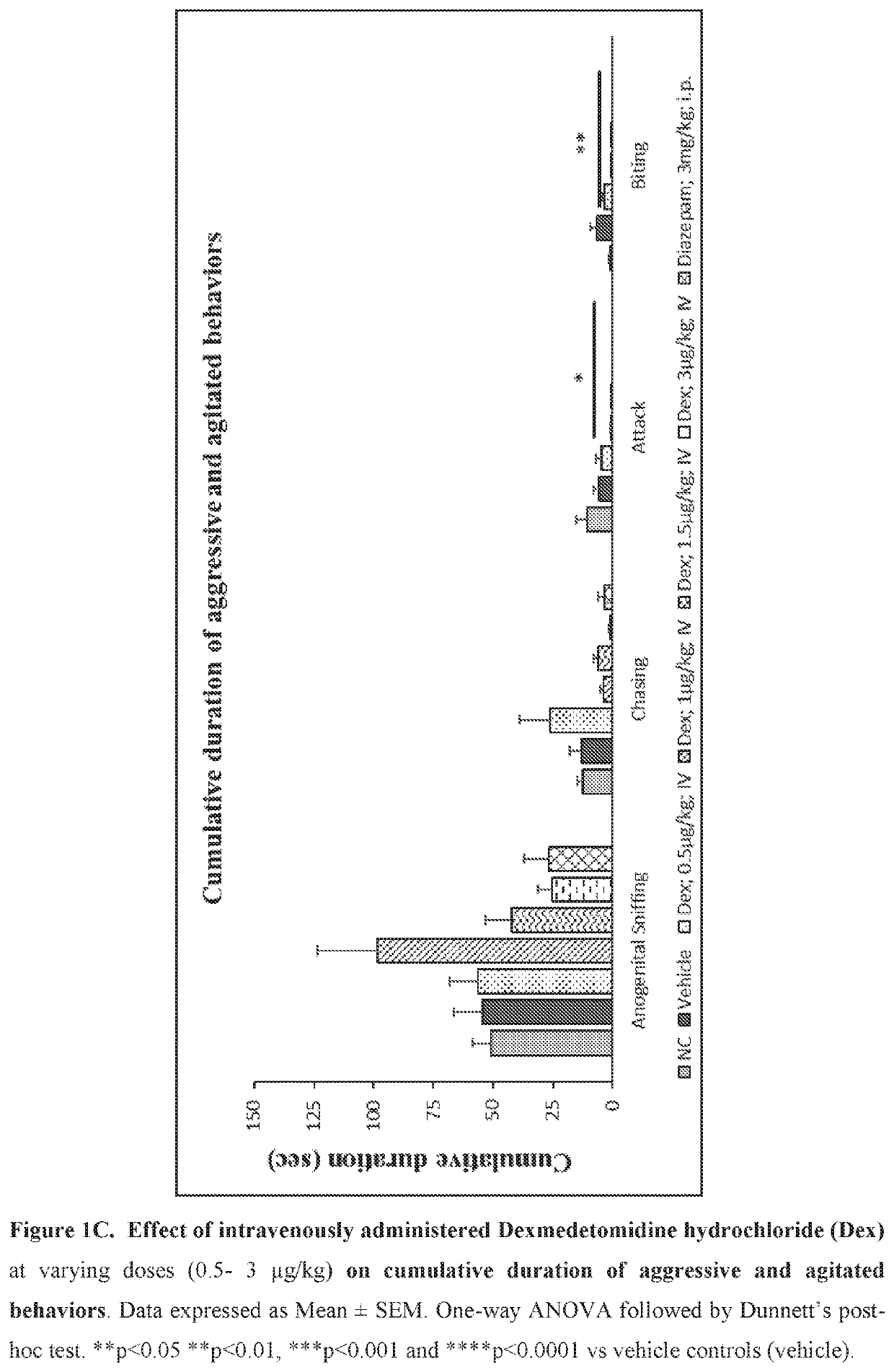Use of sublingual dexmedetomidine for the treatment of agitation
a technology of dexmedetomidine and agitation, which is applied in the direction of nervous disorders, drug compositions, organic active ingredients, etc., can solve the problems of destroying the memory and ability to learn, reason, and make judgments, and excessive over-activity,
- Summary
- Abstract
- Description
- Claims
- Application Information
AI Technical Summary
Benefits of technology
Problems solved by technology
Method used
Image
Examples
example 1
Formulation 1: Sub-Lingual Tablet
[0206]
TABLE 1Composition for a typical Sub-lingual tabletformulation used for sublingual deliveryIngredientsQuantityRangesDexmedetomidine HCl50micrograms(equivalent to base)Povidone5.0mg1.0-10.0% Croscarmellose Sodium7.0mg 5-15%Sucralose1.0mg0.05-3.0% Magnesium Stearate0.75mg0.1-2.0%Talc0.75mg0.1-2.0%Mannitolq.s 75.0 mgq.s. 100% Waterq.s
Manufacturing Process
[0207]Dexmedetomidine hydrochloride and excipients such as binder and sweetener are dissolved / dispersed into a pharmaceutically acceptable solvent (preferably water) and this solution is used to granulate the sifted blend of all other ingredients except lubricant and glidant in suitable mixer / granulator. The granules are then dried in a fluid-bed drier or other suitable one such as tray drier. The dried granules are then sized appropriately in quadro-co-mill or multi-mill. The sized granules are then loaded into a suitable blender such as V-blender and lubricated with Magnesium stearate and Talc a...
example 2
[0214]Evaluate the effect of sublingual and intravenous administration of Dexmedetomidine hydrochloride in rat ‘resident-intruder’ model of agitation or aggression at varying dosages.
[0215]The resident-intruder model is an established preclinical model of aggression and agitation, and allows spontaneous and natural expression of both offensive aggression / agitation and defensive behavior in laboratory rodents in a semi natural laboratory setting. When rodents are exposed to a novel male in their home cage environment, they perceive the novel male animal as an “intruder” and demonstrate a repertoire of defensive behaviors such as ano-genital sniffing, chasing, biting and attacking (Nelson et al., ILAR Journal (2000) 41(3): 153-162).
Materials and Methods
[0216]Animals: 2-13 week old male Wistar rats weighing 380-400 g were used as resident males. 7-8 weeks old male rats weighing 280-300 g were used as the “intruder”. Resident rats were housed with female rats for 8 days to establish ter...
example 3
n of Dexmedetomidine (0.5-3 μg / kg) in Rat Plasma Samples by LC-MS / MS
[0235]Objective: To estimate Dexmedetomidine levels in rat plasma samples obtained after dosing animals via intravenous and sublingual routes at doses of 0.5, 1, 1.5 and 3 μg / kg.
[0236]Blood collection: To determine the plasma concentration of dexmedetomidine, Dexmedetomidine hydrochloride was administered sublingually or intravenously in rats (n=3) at different doses (Formulation 4 adjusted to 0.5, 1, 1.5, 3 μg / kg). Blood was collected under mild isoflurane anesthesia from the retro-orbital plexus at 0, 5, 15, 30, 60 and 120 minutes post dosing. Plasma was separated and stored at −80° C. until Dexmedetomidine concentration was analyzed.
Materials and Methods
Preparation of Standard Solutions
[0237]A standard stock solution of dexmedetomidine hydrochloride was prepared by dissolving 1.358 mg of dexmedetomidine hydrochloride in 1358 μl of milli-Q water to achieve a concentration of 829.071 mg / ml. Working solutions of dif...
PUM
| Property | Measurement | Unit |
|---|---|---|
| time | aaaaa | aaaaa |
| time | aaaaa | aaaaa |
| concentration | aaaaa | aaaaa |
Abstract
Description
Claims
Application Information
 Login to View More
Login to View More - R&D
- Intellectual Property
- Life Sciences
- Materials
- Tech Scout
- Unparalleled Data Quality
- Higher Quality Content
- 60% Fewer Hallucinations
Browse by: Latest US Patents, China's latest patents, Technical Efficacy Thesaurus, Application Domain, Technology Topic, Popular Technical Reports.
© 2025 PatSnap. All rights reserved.Legal|Privacy policy|Modern Slavery Act Transparency Statement|Sitemap|About US| Contact US: help@patsnap.com



